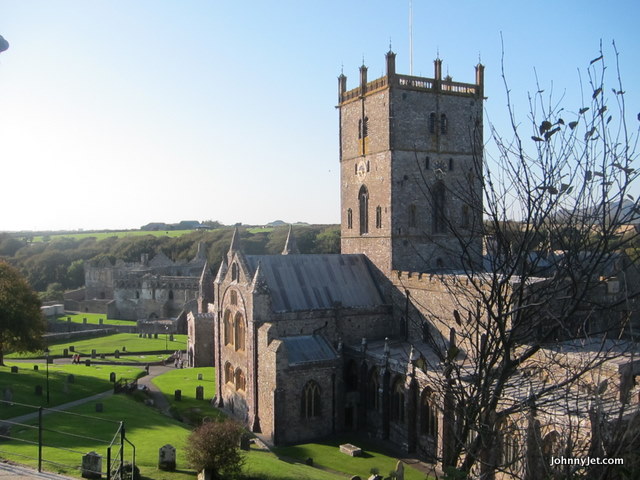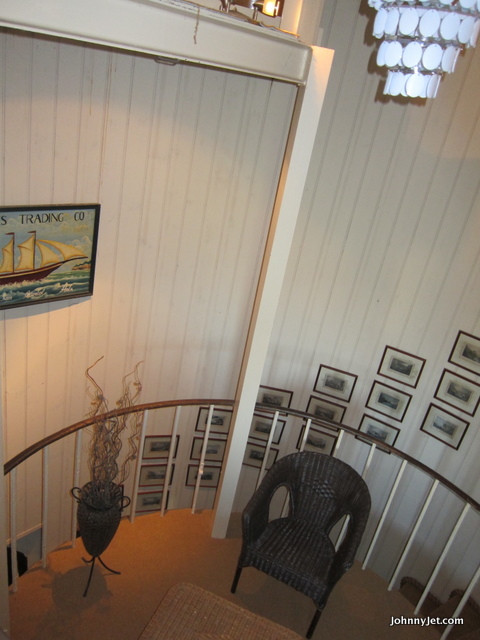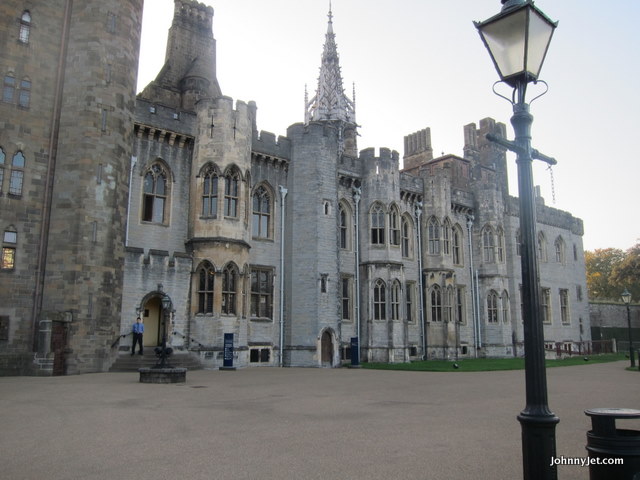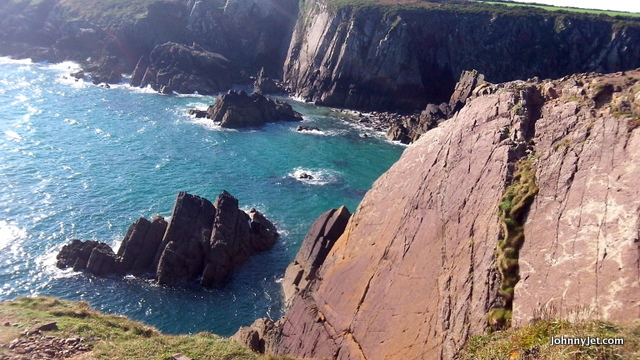Continuing the journey in Wales… As last reported in Parts One and Two, I participated in a recent trip to the beautiful country of Wales that brought together 17 bloggers from around the globe in “the Mini Welsh Challenge.” My group would put our adrenaline to the test with a theme of adventure, making our way from the North to the South. Here is Part Three – the end of the journey – that began with adventures along the Pembrokeshire Coast and ended with the nightlife of Cardiff.
The Coast of Wales

It’s no surprise that Coastal Wales was recently given the number one spot on Lonely Planet’s guide to the top 10 regions to visit in 2012. Due for completion in May, the 850-mile All Wales Coast Path (AWCP) will wind its way from Chepstow in the south to near Queensferry in the north – via dramatic serrations, sandy bays, and domineering castles.
The steep cliffs, serene beaches, and dramatic seascapes along the coast are breathtaking, particularly in Pembrokeshire, Britain’s only coastal national park. The 186-mile trek can be strenuous if done at once (which would take 10 to 15 days to complete), but most choose to take a section at a time, as we did. This particular walking path was also recently voted National Geographic’s “Second Best Walking Route in the World.”
Along the way are the Preseli Mountains, from where the giant blue stones of Stonehenge were collected. There, you can visit Pentre Ifan, a Bronze Age burial chamber that dates back to 4000 B.C. and has a striking resemblance to Stonehenge.
Also worth a stop in the park are St. Govan’s Chapel (nestled among the cliffs) and a plethora of interesting stack rocks (giant stones jetting out of the sea) and rock formations, like the Green Bridge of Wales, a stone archway that stretches from the cliffs over the sea, framing the brilliant blue water.
Harry Potter fans can check out Freshwater West Beach where the shell house was built and where the home of elf “Dobby” is buried. This beach was also used in the filming of Russell Crow’s fighting scenes for the epic Robin Hood.
To the Sea
The morning’s activities began with sea-kayaking at TYF Adventure in St. David’s. Having kayaked many times before, I was feeling confident and excited about this adventure. One difference, however. I had never kayaked wearing a full wet suit and helmet, a participation requirement. Immediately I knew this would be a little more unusual than your typical kayaking trek. True to expectations, the cold rocky seas and waves made it far and away one of the most challenging and exciting kayaking adventures I’ve had.
We paddled along the coast, exploring some inlets and coves, at one point doing what our Welsh guide called “rock hopping.” At certain places, the cliffs and rocks create whirlpool-like conditions where the tides flow in and out of narrow passings. Somewhat like surfing, you watch the swell come in and when it’s at its top height, you paddle like the dickens to get through the chute and ride the wave into the cove.
Our guide demonstrated. We all failed miserably in our first attempts, each one of us capsizing at least once in the frigid waters. Three of us got stuck in the swell when it was on its way out, only to be thrown in the water and swished around as if in Mother Nature’s washing machine. It took some serious swimming skills and maneuvering to recover and collect the kayak and paddle, but we all did. Second time around each of us made it through to enjoy the exhilarating ride.
Beach time
By midday, our kayaking was over and we had a picnic lunch on the beach with hot chocolate to warm up. Our guide made it in a super crafty camping kettle that uses kindling and wood on the inside to heat the water. We all watched in awe, as if this was the latest technology from Apple.
Just as we began to relax into the sunshine and soothing sounds of the crashing waves, Eddy (the human monkey I described in Part One) was climbing the cliffs, unharnessed, in wet shoes, making Mike nervous and intriguing the rest of us.
He came back to the beach to announce that somehow he had lost his prized possession, a new waterproof Kodak camera that took both still shots and video (a lovely gift from Visit Wales to all of the bloggers upon arrival). As a team, we searched and scoured to no avail. It was time to let it go, and jumping off of cliffs into the sea was the perfect way to distract and forget.
Coasteering
When I first looked at the trip itinerary and saw “coasteering,” I’d never heard of it. I found video and photos in a google search and was instantly excited – it was right up my adrenaline junkie alley. I would describe it as similar to mountaineering, only along the coast and without harnesses or safety nets. You make your way along the shoreline by jumping off cliffs, swimming in the sea to the next cliff, climbing rocks, and jumping again.
Along the way, we got to swim into dark caves, exploring the St. David’s coast as you can only do in this way because these areas are otherwise inaccessible. At first, the temperature of the water and the rockiness of the sea were a bit startling, even with a wet suit, but eventually, numbness takes over and you get used to it! At times the tides are strong and you have to be coordinated to read them and let them help push you onto the rocks for your next climb.
The climbs are interesting to say the least and wet sneakers don’t help you feel securely attached to the rock. Having recently climbed a Via Ferrata in Quebec, this seemed highly dangerous to me, not being able to rely on a harness or caribineers to hook into, but you just have to take your time and make sure you have a firm grip and a steady mind before navigating your way up the cliffs to the next jump.
The early jumps were small, like a diving board to a pool. The last jump, which I admit took me quite some time to build up the guts to do, was 30 feet above the water. The life vests (“buoyancy aids” as the Welsh say) helped to make the rise to the surface quicker. The key is to just GO. Don’t overthink it. Trust the guide, know it’s deep enough, and just jump. Waiting until you’re “ready,” as I did on the last high jump only makes your mind play tricks on you.
The accomplishment you feel at facing those fears and conquering them is incredible. It’s not saving the world, but it’s certainly a lesson in personal fortitude and perseverance. Interestingly, TYF is credited with pioneering the activity of coasteering, starting the world kayak freestyle championships, and becoming Europe’s first adventure business to go Carbon Neutral and sign up to 1% for the Planet.
Wales Holiest Place
Perhaps it was fitting that post-coasteering (and following Eddy finding the missing camera just before high tide came in), we paid a visit to St. David’s Cathedral in the lovely village of the same name. Filled with charming art stores, galleries, and tea rooms, the spotlight is on the impressive cathedral.
Part of its beauty is its location, nestled in the hills in a hollow to prevent medieval Vikings from spotting it from the sea. A functioning church since the 6th century, the cathedral began in the early 12th century. It was slightly damaged in a 1248 earthquake that left its floors slightly sloped and on an angle. The Welsh say it’s a bit “drunk,” an ironic expression considering its reputation as Wales’ most holy place.
The Cathedral is otherwise is in good condition, even though it was sacked seven times throughout its history. For a bit of medieval humor, take a look at the misericords (under the seats behind the rood screen) – you’ll find a carved boat with people hanging over the edge, seasick.
A Night in a Lighthouse
The second to last night of the trip was spent in a lighthouse at St. Ann’s Head. Set atop a cliff at the entrance to the massive Milford Haven harbor, the old lighthouse was converted into a vacation rental. Now occupying one of the most stunning locations of Pembrokeshire Coast National Park, staying there is truly unique and special.
We arrived at the perfect time to enjoy a glass of wine during sunset. We chose the “den,” as I called it, the very top floor of the lighthouse tower, surrounded by windows and 360-degree views of the sea and the land. It was one of those moments where talking seems unnecessary, when the natural beauty speaks so loudly, the only appropriate thing to do is be still, present, and take it all in.
The St. Ann’s Head Lighthouse vacation rental is set up like a home, with a full kitchen, dining room, outdoor patio and barbecue, great room, several seating areas or reading rooms, and several bedrooms that can accommodate eight to 10 people. What makes it truly unique beyond the location is the tower. I had the luck of the draw and claimed the one bedroom that is in the tower. Yes, I had to walk up three flights of a spiral staircase to get there, choosing to leave my luggage on the ground floor and just bring up what I needed. But once there, I felt like a princess.
Continuing to explore the lighthouse upon arrival, we came upon an undiscovered section that featured an indoor pool and sauna with windows that overlooked the sea below. I could hardly wait to use it to soothe my tired muscles and bruised body from the being one with the sea and rocks all day!
As much as I didn’t want to leave the lighthouse – ever – and would have loved to cook dinner at our temporary “home,” we had dinner reservations in Pembrokeshire at a charming pub, the Black Swan.
A True Welsh Pub
Who knew that an authentic Welsh pub would serve more than just spectacular fish ‘n chips! Shark, yes shark, was one of the specials for the night. I chose to go with a white fish instead, but the appetizers, entrees, and dessert were all very good.
The Black Swan is located along a popular beach that was populated with kids, dogs, families, and couples. It looked like “the” place to be and I imagined coming in for a pint after a day of frolicking on the beach during the summer.
This also became the location where we’d complete two of our challenges: collecting Welsh beer mats, and ordering a drink – in Welsh! I had a little cheat sheet in case I forgot my words, but to my surprise, I actually didn’t need it. This is what I wrote – “Die pint okuru esqueluth un dah,” meaning something along the lines of “I’d like two pints of beer please.” This is not the correct spelling. But this is what proper pronunciation sounds like, so there you go! If you want to order drinks in Wales, you now know how.
Back to the Lighthouse…
As this was the last night of the groups’ individual trips and we’d be joining the other bloggers the following day, we had one final task to complete: a 30-second video of our experience.
The five of us gathered at the dining table with our laptops, flash drives, memory card readers, and cameras, and compiled the best of the week. Jef and Eddy took the lead and in a couple of hours, our 30-second sampler was done.
One note: there is clip of us saying a common Welsh phrase: “I looked in the house, and there he was gone!” This phrase, as I came to be a huge fan, can be used in all kinds of crazy ways. For example, returning to LAX after the trip, my luggage was lost. I tweeted to Mike: “Arrived at LAX, looked for my bag, and there it was, gone!” The Welsh are funny people with all sorts of odd expressions. You just have to laugh.
The final result we submitted for our challenge is here:
Late that evening to reward ourselves for all the hard work putting together a video masterpiece, we ventured to the pool and sauna. It was the perfect end to a perfect day, filled with adventure, fear, laughter, food, new friends, and the goodhearted fun that can only come from a week of roadtripping around a beautiful country with the curiosity of a child.
As we had been hearing ghost stories all week – the lore of Wales is a vibrant pastime – I think it had an affect on me. I’m not crazy, but I felt the presence of a friendly ghost in the lighthouse tower when I went to bed that night. When telling the others about it the next day, they agreed the hot and cold breeze I felt and shadows seen were a bit odd, but it’s also entirely possible I was having a tired, wine and sauna-induced moment of insanity. Either way, should you ever visit the lighthouse, I’d love to know if others have similar experiences in the tower at night.
I can honestly say the simple joy of our stay in the St. Ann’s Head lighthouse was memorable, unique, and quite possibly once-in-a-lifetime special.
Cosmopolitan Rafting
It was a bit of a shock to the system to arrive in Cardiff, the capital city of Wales, the next day after being in such serene, middle-of-nowhere beauty all week. The two-hour drive along the M4 Motorway took us straight to our first stop, the Cardiff International White Water (CIWW) facility at the International Sports Village in Cardiff Bay. There, we’d be racing against the other groups for our final challenge.
As great as it was to be reunited with the other groups, the competitor in me came out. The others had been eating and learning about culture all week while we were out mountain biking, “yurting,” and jumping off cliffs, so this was ours to lose!
I had never seen a man-made rafting facility like this before. Water is pumped in from the sea, giving them on-demand whitewater when they need it, but essentially it’s a concrete, circular track with obstacles along the way to simulate what a more natural whitewater experience would be like.
Once again, we suited up in wet suits and helmets. After a brief instruction from our guide on what self-explanatory commands like “right,” “left,” “down,” and “up” meant, we practiced and head up the motorized ramp in our raft for our first run.
Although this is no Grand Canyon for sure, it’s actually a very fun ride. Our trial run went fine and on the next two, we were timed. We had a good first run, only getting stuck once and quickly recovered. On the second we ran into a barrier and had some difficulty getting back on course. In the end, our time was good enough to win the challenge and secure our pride.
Knowing we were the adventurous types, our guide did what he could to make the rafting more challenging, faster, and more rough, even flipping us over twice. While other groups were making a fuss over the icy temperature of the water, we felt like the experienced experts, right at home in the cold waters of Wales.
Cardiff
Driving through Cardiff on the way to the hotel, we passed some of the modern sights in the city – Millennium Stadium, where the “religion” of Wales (rugby) is played, the Senedd (Welsh Parliament Building), and Millennium Centre, an arts and cultural venue. The Senedd is an impressive building. You can’t miss it with its wave-like roof that juts out to the sky, a blend of slate and glass that reflects the waters of the Cardiff Bay.
Millennium Stadium packs in 75,000 cheering fans for any given match. When not playing, visitors can take a tour that includes a run through the players’ tunnel to the field, while hearing a recording of what 75,000 fans sounds like. While we didn’t have time to try this, Mike assured us that it’s an amazing goose bumps kind of feeling, regardless of whether or not you’re a rugby fan.
Millennium Center, which resembles a glass armadillo, is in an area called Mermaid Quay full of shops, bars, and restaurants. The dome of the building is coated in copper oxide, giving it a bronze glow. Home to the Welsh National Opera, you can often enjoy a free performance from hip hop to poetry readings.
Queen Street is the main shopping section of the city. Here you’ll find everything from the very high-end luxury fashion to the more edgy chic independent labels. The area is eclectic – coffee houses are next to knitting shops and you can find a violin or surf store next to a Welsh cheese shop.
Cardiff Market has been around in one form or another since the 1700s, but has occupied its current spot for more than 100 years. Where you once would find livestock tethers and penned outside its doors (or a hangman’s noose – this was also once a prison and used for executions), today the Victorian-styled market is an outlet for products and food, much of which is locally-made.
As with many European cities, the cosmopolitan architecture sits alongside the historical structures, with Cardiff Castle being at the heart of it all.
Banquet at the Castle
After checking into the Hilton Hotel Cardiff and taking a much-needed hot shower, it was time to walk across the street to the Castle for a cocktail party where we’d learn the winner of the Mini Welsh Challenge, followed by a banquet dinner.
Originally a Roman fort, the Castle is now blends buildings from many eras, with a gothic influence thanks to the 3rd Marquis of Bute who transformed the property. For a great view of the city, climb up to the top of the 12th century Norman keep (the small castle in the center).
At the cocktail reception in the main hall of the castle, we were able to see what everyone came up with for their challenges, from the best photo with a sheep to the best photo with the group’s mascot to the one everyone enjoyed the most – the 30-second video recap.
Dinner in the castle was in a hall below the ground level, in a stone cave of sorts and featured themed entertainment, open to the public. The talented singers performed traditional tunes and comical bits that incorporated patrons, including two from our group, making the evening even more entertaining. Somewhere between Disneyland and Medieval Times, it’s an enjoyable way to get into the spirit of Cardiff.
After the banquet, we strolled into downtown Cardiff to check out the nightlife. We pub hopped and bar crawled our way from spot to spot. There’s something for everyone. From grunge rock bars to trendy clubs with deejays sinning the latest electronica, Cardiff has it all.
In the end, one of the culture groups was awarded title of the first Mini Welsh Challenge, but in spirit, our adventure group won. We bonded, we had the most fun, and were able to return home with memories that will forever make Wales stand out as a truly extraordinary place.
This trip was sponsored in part by Visit Wales.
About the Author: Lindsay Taub is an award-winning journalist with over a decade of experience as a writer/editor/photographer covering travel, lifestyle, culture, arts, food, health, and all facets that make life a journey. Follow her on twitter @lindsaytaub58.





























